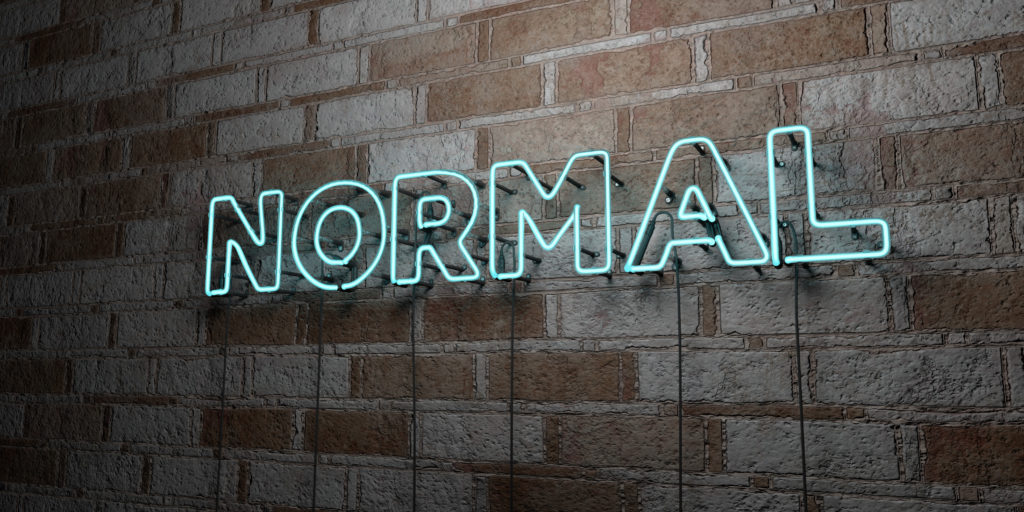
One of the most frequently repeated words since all this began one year ago in March is “normal.”
From the beginning, we asked ourselves – along with the scientists and the politicians – when do we get back to “normal?” Or what will the “new normal” be like?
I’ve got quotes around all these phrases, because it is becoming abundantly clear we may not get back to that “normal” anytime soon. Maybe not again.
And that’s a tough one to swallow, personally and of course, professionally.
In the world of radio, Nielsen provides us with a monthly checkup of the return to “normalcy,” at least when it comes to radio listening. And while many consumers are listening more than they were back in March 2020 (Nielsen’s benchmark), the numbers still trail their original levels. And of course, the same is true of radio sales for most broadcasters in most markets.
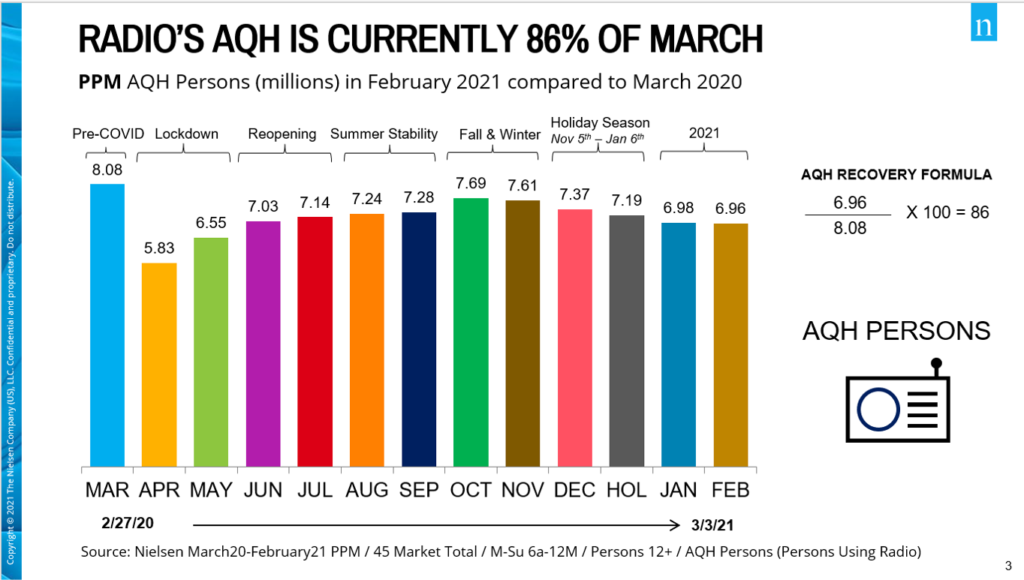
It’s one thing to measure radio listening. The Holy Grail is gaining an understanding of the activities people feel safe enough to pursue. Fortunately, Morning Consult has been conducting “waves” of interviews since the pandemic began.
The chart below illustrates the roller coaster ride we’ve been on the past year or so. And this one breaks it down by comfort levels doing activities like attending a concert or a theater.
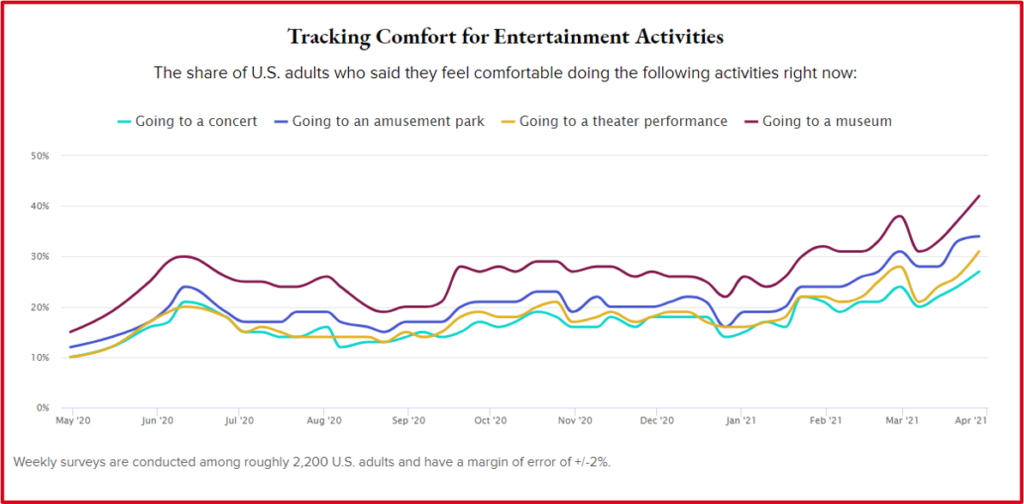
There’s encouraging news here. The most recent survey from earlier this month illustrates a sense of optimism we haven’t seen for these entertainment activities. And that’s a good sign.
But as we also learned throughout 2020, you can’t take anything for granted. This chart clearly shows how COVID often worked in unpredictable ways, dashing our enthusiasm at various points during the year. That feared “4th Wave” is something we’ve heard a lot about these past few weeks, even as the U.S. has been vaccinating millions of its citizens every day.
We just don’t know.
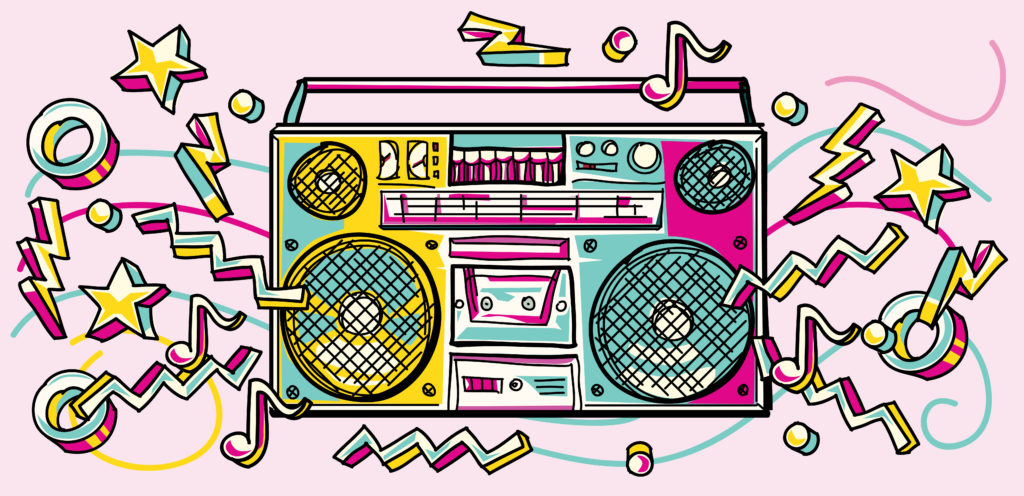 And that’s a perfect segue to radio. That’s because we’ve operated for decades like we understand how consumers use us. Now only has that been changing, it may be forever changed.
And that’s a perfect segue to radio. That’s because we’ve operated for decades like we understand how consumers use us. Now only has that been changing, it may be forever changed.
I was educated and trained to be an audience researcher. That was never about determining the most popular Queen song ever recorded. Any moron can figure that out.
Instead, my mission was to study and gain a deeper understanding of the audience, their perceptions and their behavior. That’s how you more effectively learn how to serve and entertain them.
It has meant using a combination of investigative techniques, beyond analyzing the ratings: focus and LAB groups, perceptual studies, music and dial tests, and even ethnography. Jacobs Media has been involved in three “ethno” studies over the past 15 years where we’ve all but moved in with consumers – observing them using media and technology.
I depend on those combined insights in almost everything I do – in the way I advise stations, broadcast execs and their teams, and other clients looking to learn how to navigate our ever-changing waters.
But then COVID happened. And while we can wait and watch the Nielsen reports and Morning Consult “waves,” we’d better wrap our heads around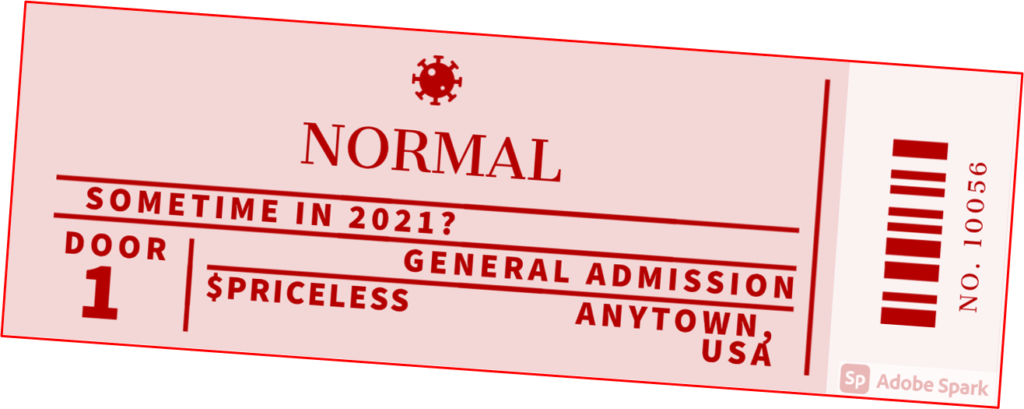 the notion no one is going to punch our return ticket to the place we once knew as “Normal.”
the notion no one is going to punch our return ticket to the place we once knew as “Normal.”
In fact, there is every indication we’re not going back – certainly not to the place we left what seems a lifetime ago in February 2020.
Many of the “givens” we could always count on are now at best iffy, thanks to a combination of changing times and a global pandemic. Prior to COVID, many of the conditions we’re experiencing now were already in play. But events of the last year have acted like an accelerant.
Consider some of the assumptions we’ve always made about how radio is used and enjoyed by millions of consumers.
 The “drives” always dominate – It’s always been about morning drive as the #1 daypart, followed by afternoon drive, thanks for the most part to workplace commuting, as well as school transporting hours. Radio has always been dependent on two key conditions – a strong employment base coupled with traffic jams.
The “drives” always dominate – It’s always been about morning drive as the #1 daypart, followed by afternoon drive, thanks for the most part to workplace commuting, as well as school transporting hours. Radio has always been dependent on two key conditions – a strong employment base coupled with traffic jams.
Now, we’re looking at a post-pandemic situation where many may not be returning to work. Or if they’re still employed, they may no longer be at their desks in an office or other conventional place of work. That will impact those PUMM levels in PPM, as well as diarykeepers drawing the line down the page, signifying hours of listening to a morning or afternoon show.
Dealing with the changing value of “drive time” might have an effect on fundamental issues – the rate of talent pay, contract length, ratings bonuses, and rate setting. It may not be just a matter of changing the hours of a show.
Personality shows are already going above and beyond their dayparts, creating content for “after hours” podcasts, on-demand content, videos, and social media content. Those “extra curriculars” are likely to continue.
Groups of people listen to radio at work for long durations – Our Techsurveys show that many workers enjoy having radio – or other content services – on in the background while they do their jobs. But for the same reasons mentioned above regarding “drive times,” the at-work listening paradigm has shifted. “Group listening” will be diminished as people work from home, return to the workplace only on certain days, and no longer do their jobs in the same spaces as their co-workers.
services – on in the background while they do their jobs. But for the same reasons mentioned above regarding “drive times,” the at-work listening paradigm has shifted. “Group listening” will be diminished as people work from home, return to the workplace only on certain days, and no longer do their jobs in the same spaces as their co-workers.
Every home has several working radios – I recently happened across an Encyclopedia.com blurb that grabbed my attention. It talked about the ubiquitous presence of radios in the home front, late in the previous century:
“Radio remained a popular source of news and entertainment. In fact, a survey done in the 1980s revealed that 99 percent of American households owned a radio (as compared with 98 percent owning a television) and that the average American household had 5.5 radios, not including car radios.”
And today, Techsurvey 2021 results show that only eight in ten (81%) have at least one working radio at home that they actually use. That percentage has been dropping. And remember, these are radio fans.
The industry’s push to develop distribution alternatives – on smart speakers, mobile phones, connected TVs, and laptops – are no longer sound strategies. They are imperatives.
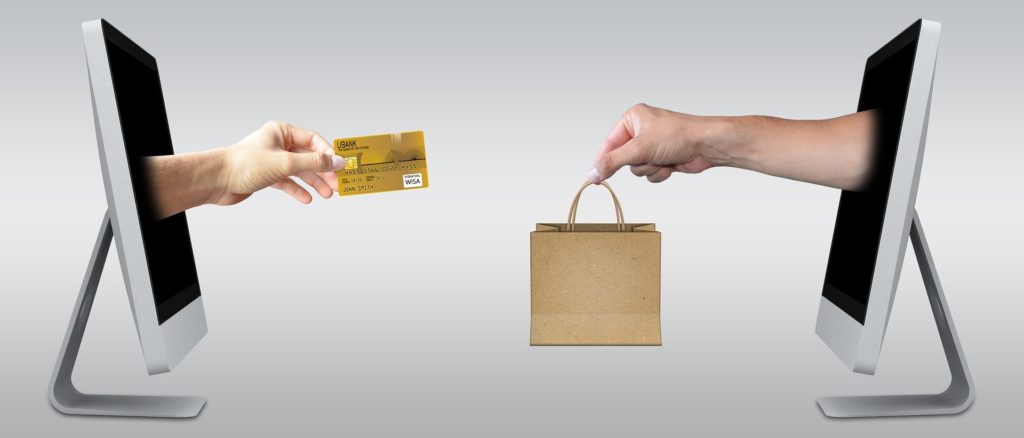 Local direct business is our bread and butter – Restaurants, bars, car dealers, entertainment venues, and retail stores have been ravaged by the economic impact of the pandemic. How many will come bouncing back remains to be seen, but it is safe to assume there will be fewer operational companies in 2022 than there were before we started wearing masks.
Local direct business is our bread and butter – Restaurants, bars, car dealers, entertainment venues, and retail stores have been ravaged by the economic impact of the pandemic. How many will come bouncing back remains to be seen, but it is safe to assume there will be fewer operational companies in 2022 than there were before we started wearing masks.
How radio sales will be interfacing with local clients may change from the traditional model of quoting rates and planning promotions. Many local businesses are now competing directly against online giants that include Google, Facebook, and Amazon. Dealerships aren’t just up against their peers – they now have CarMax, Carvana, and several other serious players to contend with. It will require more than just “remotes” to keep local dealerships healthy.
E-commerce exploded during COVID, and it’s not likely to go backwards. But many local retailers do not have the technical tools, know-how, or time to pivot their businesses. Can radio marketers help them transition to online transactions, mobile apps, and other tools that are now table stakes in the retail community?
Radio is king of the car – This one’s been coming for a while, and it’s why we produced those DASH Conferences going on eight years ago. The dashboard now has more computing power than most PCs, creating a very different in-vehicle experience, loaded with options. It’s not just that Work From Home has reduced traffic – even when people are in their cars, they’re spending less time listening to AM/FM radio.
That’s the sad reality we continue to track in our Techsurveys, conducted among chiefly fans of broadcast radio. The pie charts below depict the hierarchy of audio consumption while in cars over the past several years. Focus on the green slices – AM/FM listening. Yes, radio is still dominant, but like a leaky balloon, it is losing air.
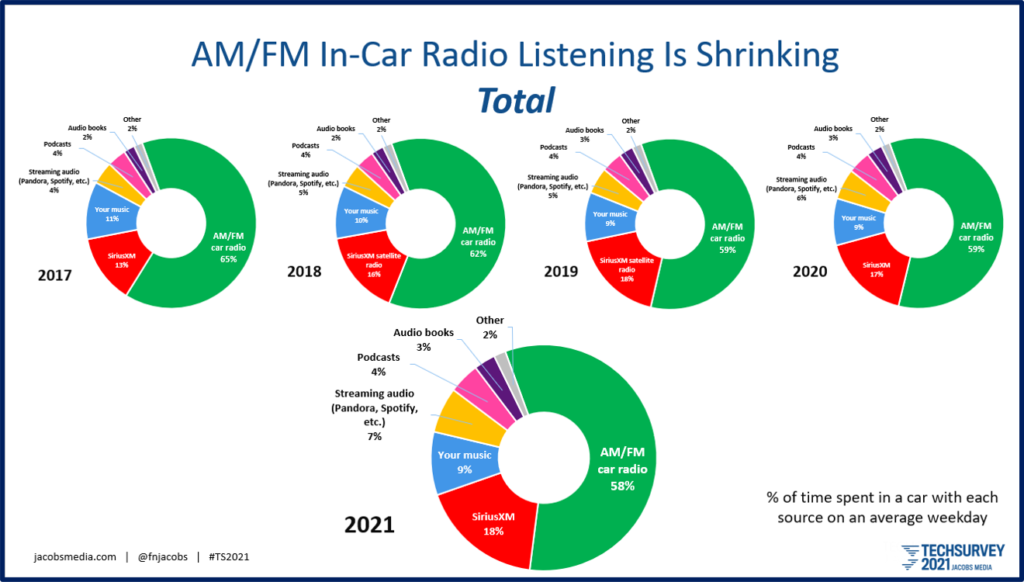
Radios will always be in cars – I’ve tackled this gnarly issue in numerous blog posts over the past decade – and during 2020. As the dashboard physically expands, more features and capabilities are already being developed. Presets will give way to AI learning – the vehicle studying your driving and entertainment habits, and then making your own preferences more front and center on displays.
The electrification of the fleet may usher in new dashboard configurations, and AM radio will have to prove its value to automakers, eager to make their vehicles more modern and cutting-edge. And as the OEMs – the manufacturers – seek to monetize their cars via their media systems, will radio continue its century-long “free ride” in the dash.
Radio will have to work harder to “keep up appearances” in the dash, including improved use of RDS, HD Radio, metadata, and photos.
Radio’s lobbying groups and industry organizations will earn their dues over the next several years.
Great ratings beget great sales – This “given” has been on shaky ground for some time now, and the pandemic isn’t likely to make things better. 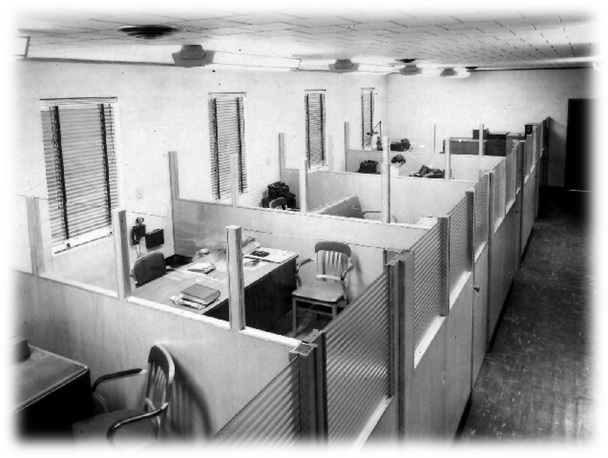 Ratings recoveries are already taking place as the Nielsen chart shows. But what about demand for advertising inventory? How many stations have been at or near their ratings goals – or exceeded them – but still are underperforming when it comes to revenue?
Ratings recoveries are already taking place as the Nielsen chart shows. But what about demand for advertising inventory? How many stations have been at or near their ratings goals – or exceeded them – but still are underperforming when it comes to revenue?
It seems absurd that a medium that’s a century old has to demonstrate proof of concept to advertisers. But, in fact, that may be the world in which we’re already living. How can broadcasters leverage their audience engagement across platforms – on-air, websites, mobile, streams – to create packages that will produce results.
It won’t be about “How can we make money with digital?” But instead, how can we use all the tools in our arsenal to create programs that help our clients succeed? That’s a very different question than “What’s your cost per point?” or “What’s your radio budget?”
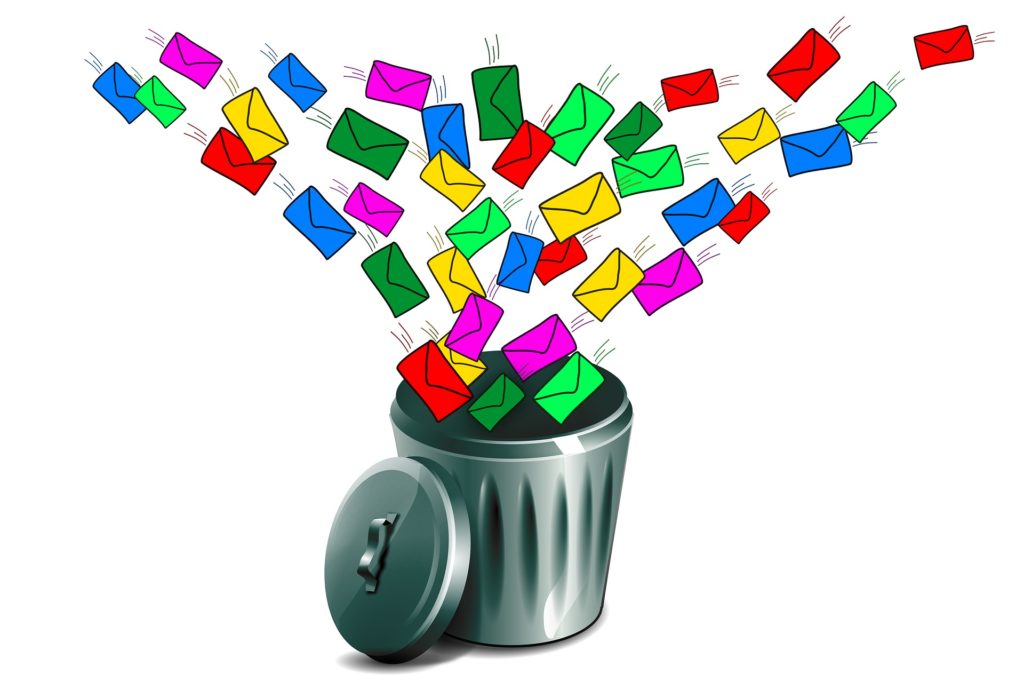 Billboards and direct mail always drive ratings – But if people aren’t in their cars or in the workplace at pre-pandemic levels, how will yesterday’s marketing tools connect with consumers where they are? As consumers try to regain their equilibria, will they need to be “re-introduced” to our radio stations?
Billboards and direct mail always drive ratings – But if people aren’t in their cars or in the workplace at pre-pandemic levels, how will yesterday’s marketing tools connect with consumers where they are? As consumers try to regain their equilibria, will they need to be “re-introduced” to our radio stations?
Moving forward, which marketing platforms will be most effective – for results and economy? Years ago, Randy Michaels dictated cross-cluster promotion, a tactic that wasn’t always popular in Clear Channel buildings. But, in fact, is that a tactic broadcasters should reconsider, not unlike the ways in which podcasts are promoted on other podcasts, and SiriusXM is a constant cross-channel promotional machine?
I’m scratching the surface, but hopefully, giving you the sense that Dorothy was right all along:
“Toto, we’re not in Kansas anymore.”
Nor is it 2019. Every organization in and around the radio business – including my own companies – will be tasked with identifying new trends, new conditions, and perhaps even new “givens” that will become a term we all loathe. But it’s true:
The New Normal.
- What Is It With Female Robot DJs? - April 30, 2025
- Why “Dance With Those Who Brung You” Should Be Radio’s Operating Philosophy In 2025 - April 29, 2025
- The Exponential Value of Nurturing Radio Superfans - April 28, 2025




WOW. If misery loves company, every business is dealing with the new reality that COVID-19 ushered in like a lightning bolt.
They say inside every problem lies an opportunity and as Admiral Halsey said so eloquently: “All problems become smaller when you confront them instead of dodging them.”
In today’s blog Fred, I believe you have done exactly that.
Thank You
And that’s the point, Dick. Yes, our lives will “normalize,” but what challenges will radio have as the dust clears. Thanks for engaging on this challenging topic.
Wouldn’t you just love to be a fly one the wall in the conference rooms where all of the best minds at radio companies try to figure out how they’re going to cut their way past the post pandemic challenges? I seriously think radio may be nearing the point of no return. if it doesn’t improve/enhance/modernize its product and business model, its going to continue on its established slow but steady decline.
The replacements for retail, restaurants and venues (I think restaurants and venues will come back strongly to at least pre pandemic and maybe better) are digital, so they’ll probably look for digital platforms to market themselves. And radio has scaled back its sales effort so that in many places they don’t have anyone who reaches out and cold calls restaurants, bars and concert promoters. Further, radio owns very few digital assets (Townsquare is a notable exception) so that selling a broad based marketing platform leaves them with commission only on the digital part.
What could radio do?
1) Experiment with a subscription model. Start by beta testing some stations with no spots and see how much better the ratings are. Try that on 10-20 stations in different formats/markets for a year. If people love it, maybe they’d pay for it – like Satellite radio without the expense of the satellite. So it could be pretty cheap and m make money. It works for Hulu.
2) Try some new formats. Americana/Red Dirt/Texas Country, pure Hip Hop and Indie are three that come to mind, but there are more. All of them generate a lot of streams, concert tickets and merch sales. And there isn’t a well defined path to success for the artists, yet many thrive. If there was a path/vertical with an ecosystem that included radio and a national streaming platform, there is money to be made with the vertical and a real benefit to artists who right now, mostly throw stuff up against the digital wall and hope something sticks.
3) Get the FCC to drop the language barrier. Its relevance has long since passed and a lot of music that people like has to be dumbed down or not played at all on radio but can be played on all of its competitors. FWIW, TV should do that too.
4) Try to negotiate a sweetheart deal for streaming royalties. Radio has much less leverage here than it once did and the potential is very much diminished, but its still worth doing.
5) Get rid of that AFTRA thing. I don’t know why anyone would listen to a radio station stream, but many do and the ability to sell ads and not have to run outright silly stuff during spot clusters can only help.
Maybe these ideas are bad, maybe they’ve been discussed and dismissed for good reasons. But this is the minimum level of brainstorming/beta testing radio needs to do if it wants to avoid pictures of radios being included in shared memes (“like if you remember these”) with column shifts, dial phones Ms. Pacman and AOL AIM ten years from now.
Not only do I not think these are bad ideas but I think we now have enough history to show how successful some of these ideas can be. Radio is still a relatively inexpensive way to reach the masses–and a small percentage of listeners can support a station. The K-Love’s and NPR’s have more than proven that at this point. No doubt there are other models that would work. I like the Hulu idea. I also like the idea of finding more under-served niche programming that can pull an audience willing to support it. That keeps a signal on the air long enough for others to discover and support it–or at least the potential to.
I don’t think “mass appeal, mainstream” formats are going away anytime soon, but with so many stations under-performing (or going under, for that matter), why not give them at least some shot at life…and delay, or perhaps even prevent them from keeping company with Ms. Pacman.
Dave, thanks for this, and continuing the conversation with Bob. When our blog stimulates these types of exchanges, it tells me we’re doing our jobs.
Bob, you’d have made one helluva consultant. These are stimulating ideas. Not every radio broadcaster is taking a macro look at their place in the industry. And that’s a big part of why expansive ideas like some of these don’t happen too often, if at all.
I have a few of my own, as you might imagine. I share them with trusted clients who are open to doing things differently. These are the kinds of big picture thoughts and innovations the business needs to consider, and possibly pursue. As you’ve noted in past comments (OK, diatribes), doing the same things over and over again and expecting different results is pretty pointless.
Thanks, as always, Bob, for sharing the big ideas.
Fred, this is a very very good read.
I agree with every single point you’ve made. RADIO isn’t even the same as it was a year ago. We have a guy who is home during the day and does all his shifts from a home studio, then comes in in the evening a couple of times a week. It actually works pretty well.
When it comes to apps, and personal assistants, they ARE the future of radio. I think they’re going to have to step up their research game for it to work for all of us. Right now, (and maybe it’s my company) we only get how many log in’s, if it’s a phone, whether it’s an android or apple, and maybe tsl. I’d really like to see actual stats, who is turning it on, for how long, how many times in a day etc who they are, where they are and what they’re doing. That would really help people like me get a handle on this streaming thing.
Another thing I’ve been thinking about lately, is most of us on-air folks should be coming up with some kind of podcast that will add to our stations sites and our personal brands. I feel that the only way to really win locally in this age is to connect as personally as possible with our audience. Even if someone is listening across the world. The problem with that is, they have to stand out. It’s hard to come up with original things sometimes when we’re wearing so many hats. IE: I have 3 airshifts a day M-F plus an extra for Saturday, program 2 stations, and I’m a co prod director of an 8 station cluster. I’m not complaining, but there is so little time for creativity anymore.
I’d like to add 2 final cents. We have 8 stations in our cluster. We cross-promote each other, do what we call “roadblock” remotes where you do a recorded break at the remote instead of live and it airs on all stations, we share contests and make no secret of our jocks being on multiple stations. That being said, the last book we saw, our cluster had 88% of the market. It works. We just have to stop being afraid of it. It’s hard to do when for decades even uttering the existence of another station was blasphemy.
Tammie, first and foremost, thanks for engaging on this blog post, and for the thoughtful response.
A key point here is that broadcast radio has not gotten its fair share of credit – or revenue – from its stream listening, whether it’s on computers, tablets, smartphones, and smart speakers. Our research shows that especially during the early months of COVID when so many of us were hunkered down at home, many were still listening to a favorite station – via a stream.
I agree with the podcast observation, but one mistake us programmers and consultants made during the early blog days was insisting everyone on the staff write one. As I think we learned (the hard way), not every on-air talent has the right stuff to write blog posts. Or make podcasts. But I do agree that channeling hobbies or special interests into podcasts is a worthy goal.
And your point about workload is a sad reality of the industry today. As you point out, when you’re multi-tasking all the time, there’s not a lot of room or bandwidth left for innovations and ideas. It’s too bad, and I believe hurts radio because it burns out some of our best people.
Finally, thanks for the comment about cross-cluster promotion. In the absence of outside marketing, it may be one of the smartest (and cheapest) moves radio can make. Thanks, Tammie.
Diatribes? I so prefer “refreshingly blunt”
OK, you’re earned that.
Ha! “Refreshingly blunt”! Stealing that one!